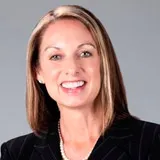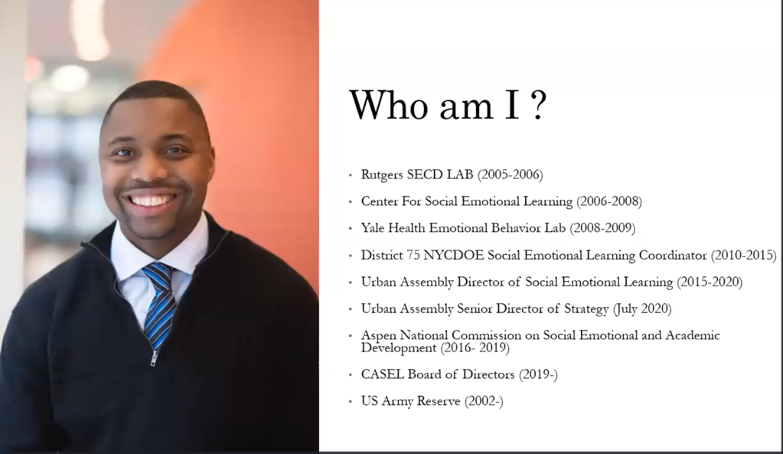A Culturally Responsive Approach to Social and Emotional Learning

After 20 years of working with success principles in the classroom, there is one thing I know for sure and believe completely: Well-being equals achievement. With that in mind, I am continually drawn to amazing individuals who are committed to helping students reach their potential by focusing on SEL.
Recently, I hosted the webinar, A Culturally Responsive Approach to Social and Emotional Learning, with David Adams, who explored the intersection of equity and SEL with examples of how to directly develop and practice culturally responsive SEL during instruction in class, after school, in sports, and into the community. I was excited about this presentation and the opportunity to work with Adams, whose commitment to equity and SEL for all learners is remarkable.
During the presentation, he shared the approach taken at The Urban Assembly (a nonprofit organization where Adams has worked for the past six years that serves more than 10,000 students through 23 public middle and high schools). He also shared the model that illustrates exactly what culturally responsive SEL is, and why all students and teachers should be given access to SEL skills without having to learn them through adversity or challenge.
Here’s a bit about Adams, which will allow you to see why he provides such a unique perspective on SEL, and why this webinar is essential viewing.

In my work, I have been following the emergence of the field of social and emotional learning for years before schools began implementing these skills into classrooms across the country, and there isn’t anyone I have met, besides Adams, who truly encompasses, lives, and breathes the meaning of social and emotional teaching and learning.
As you listen to him speak, you will hear the echoes of well-known leaders in the field, like Maurice Elias, director of the SECD LAB (Social-Emotional and Character Development Lab) at Rutgers, The State University of New Jersey, where Adams worked in 2005. You will see Elias mentioned in Adams’ definition of What is Social Emotional Learning, reflecting the influencers in his work.

From Self to Social Awareness
Adams shows you how we spend a lot of time focusing on the self with these skills with self-awareness, or self-management, but when looking at developing these skills to build a stronger sense of community, we must put a stronger emphasis on the social skills, like social awareness (where we demonstrate an awareness of the role and values of others in the greater community) or social management (where we learn to interact with others in meaningful and productive ways).
“Within the framework of Social and Emotional Learning, the domain of Social Awareness calls for students to develop an awareness of the role and values of others in the greater community. Specifically, it asks students to demonstrate a consideration for others and the desire to positively contribute to their community. The questions of: who is part of our community, what obligations we hold to each other within that community, and how will resolve conflict within that community towards the common good reflect the formation of a social contract. The framework of Social-Emotional Learning pushes young people to ask these questions of themselves and others as they pursue a community within the classroom, preparing them to do the same within their towns, for their counties, and ultimately for the nation. The tools of social awareness: perspective taking, active listening, conflict resolution, develops our social identity and shapes the ability of "we the people" to govern ourselves in ways that improve the failures of imagination that limited so many of our forefathers. Public schools are where this transformation will occur.”
If you are thinking of ways you could improve the culture of your school by looking at SEL through a cultural lens, this webinar will open your eyes with some new strategies to build a stronger community, and work to fix any gaps that might exist without these important tools that have the ability to not only repair some areas needing attention, but bring everyone together, to form the tight-knitted community where all students feel safe and thrive.
